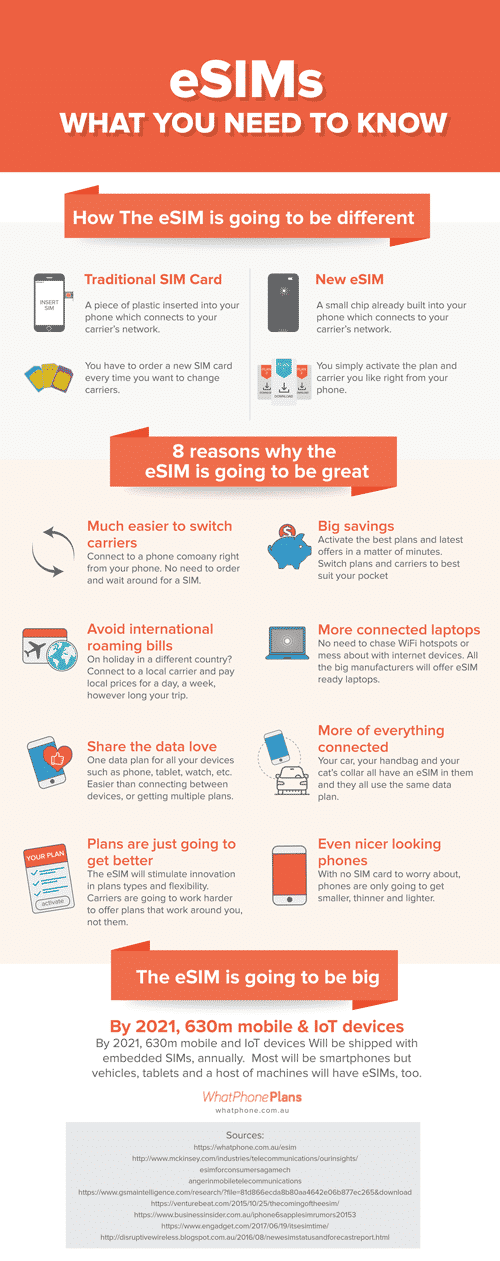Highlights
- Telstra will support eSIM technology on the iPhone 11.
- The physical SIM option will also remain available.
- As a result, customers will be able to have two phone numbers on the same device without manually switching SIMs.
- Telstra will not limit the iPhone to their Telco alone — the eSIM allows customers to use other telcos.
- Telstra also supports eSIM technology on Android phones with eSIMs.
- Optus and Vodafone already support eSIMs.
Telstra customers can now do without physical SIM cards with iPhone11
Telstra has announced that they will support eSIM technology on the new iPhone. With eSIM support, Telstra customers will be able to register and use the network’s plans without a physical SIM card.
The physical SIM card option will still be available, allowing Telstra customers to have up to two phone numbers and plans on the same device, both active without having to manually switch SIMs. The iPhone 11, 11 Pro, and 11 Pro Max began shipping this past Friday, the 19th.
We’ve reported on how eSIMs will shape the future of telecommunications. These chips provide flexibility to telcos and customers alike. In fact, Telstra isn’t alone with the eSIM adoption — both Optus and Vodafone had activated the option in previous years.
What exactly is an eSIM?
The eSIM (embedded Subscriber Module) is an improvement over the physical SIM card. This new technology allows the telco network information that’s necessary for activating your plan to be downloaded on to the phone without a physical SIM card. The eSIM makes this possible by being embedded into the device itself, which also makes it universal to several telcos, as opposed to just one.
That universal feature is probably the key benefit to the consumer. Where telcos have had a long practice of locking devices and SIMs to their own network alone, the built-in eSIM essentially takes that away. Instead, with eSIM being universal, customers can easily use a plan from whichever network they choose, with the same eSIM that has been pre-installed on the phone, eliminating the need to manually switch physical SIM cards that are partivular to individual networks.
Everything you need to know about eSIMs. Source.
This is a boon for customers who prefer to purchase their phone outright. Such customers won’t be locked in by a network-specific SIM card. This is also great news for customers who may want to move phone companies.
Of course, for this to be possible, both the device and the telco have to support the technology.
Telstra’s eSIM moves
Telstra started supporting eSIM technology back in 2017. Prior to this recent announcement, the telco supported eSIM technology on compatible windows 10 devices, as well as some wearables such as smartwatches.
Customers who owned the Surface Pro 4G LTE or HP Sceptre devices were required to go through the Windows 10 Mobile Plans app, where they were then transferred to a Telstra web page that detected the eSIM and guided them through the registration process.
The process is a bit different with the iPhone 11 line-up, though. This time, all the customer has to do is scan a QR code to begin the activation process, as opposed to going through the lengthy process of a particular app. Here are a few of Telstra’s eSIM benefits:
- Customers can use more than one telco and/or plan; not just Telstra’s. For example, if you have a roaming or international plan from Optus, and a domestic plan from Telstra, you can use both on your iPhone 11 device.
- Customers can have more than one number on the same phone without manually switching SIMs. For example, your eSIM might make use of your personal phone number, while your physical SIM can hold your business phone number.
- Eliminates the need to wait for a physical SIM to be delivered, or going to a brick-and-mortar store to pick one up; just scan the QR code and start the process to activate your plan/service.
While the eSIM is a great improvement from physical SIMs, they do have some limitations. With Telstra’s eSIM support for the iPhone 11, you can’t:
- Make or receive simultaneous calls or texts on your two phone numbers.
- Where you have more than one service/telco, only one of them can be active at a time.
Telstra have also extended their eSIM support to Android phones that have eSIMs.
Optus and Vodafone support eSIMs as well
Optus have supported eSIMs since last year. The telco enabled the technology on last year’s iPhones, (link to, https://www.optus.com.au/for-you/support/answer?id=20000) making this latest Telstra news seem a bit delayed. Vodafone have also supported eSIM technology since 2017.
With all three major telcos now supporting eSIMs, perhaps the question of whether the eSIM will go mainstream has been answered. Take a look at the best Australian eSIM deals here.
Final words
Telstra now support eSIM technology on the newly released iPhone 11 lineup. Customers can now add a plan without having a physical SIM card, by simply scanning a QR code on their iPhone device. The eSIM support means you can have both a physical SIM and the eSIM using two different plans from different telcos without having to physically switch SIMs, which also means you can have two different phone numbers. However, you can’t have both plans active simultaneously, and you can’t make or receive calls and/or texts with both numbers simultaneously.
The eSIM is a convenient improvement for the consumer. Telcos have had a long practice of locking customers into a particular device, taking away the flexibility of moving telcos. The eSIM changes this by being universal and embedded into the device, allowing customers to simply sign on to whichever eSIM-compatible network they choose, so long as the device also has an eSIM. With all three major telcos now supporting this technology, you can expect it to become the norm in no time.
